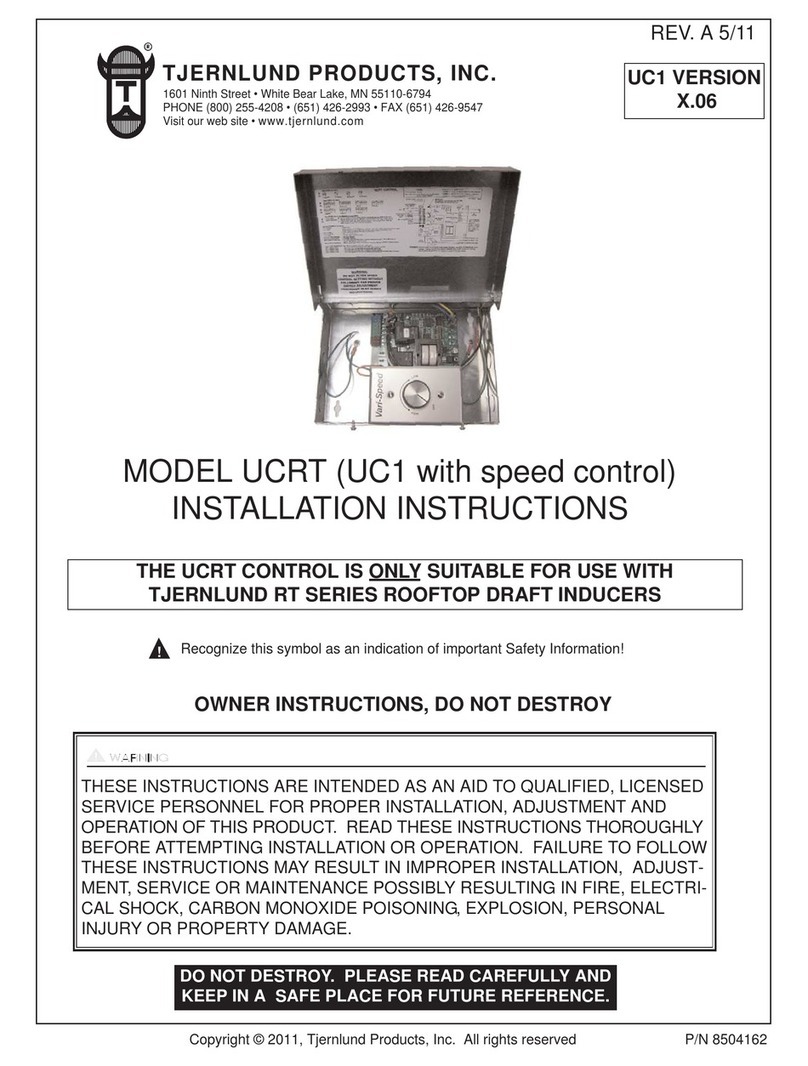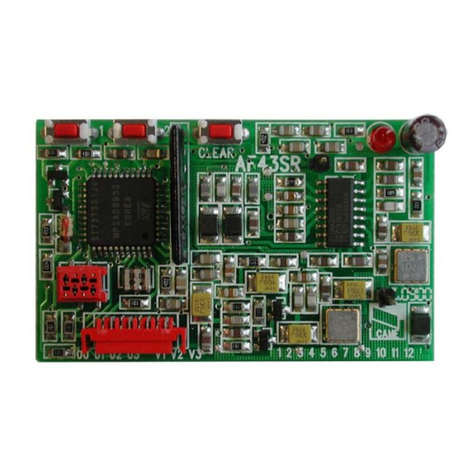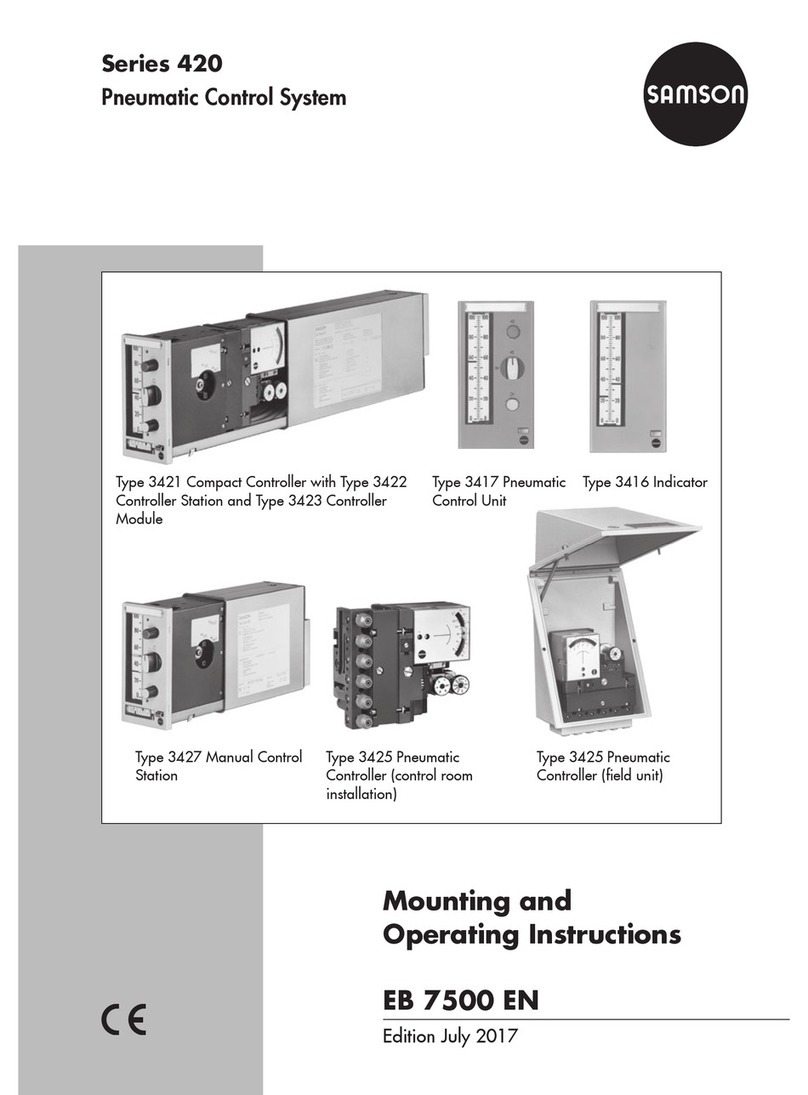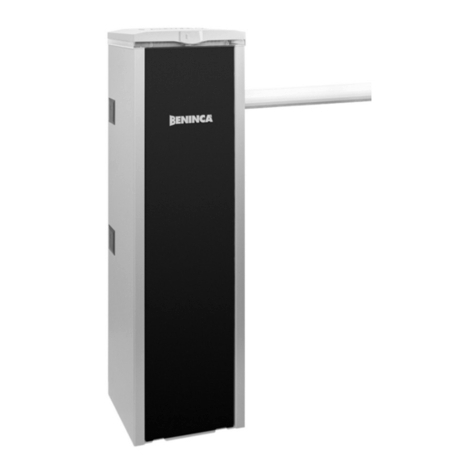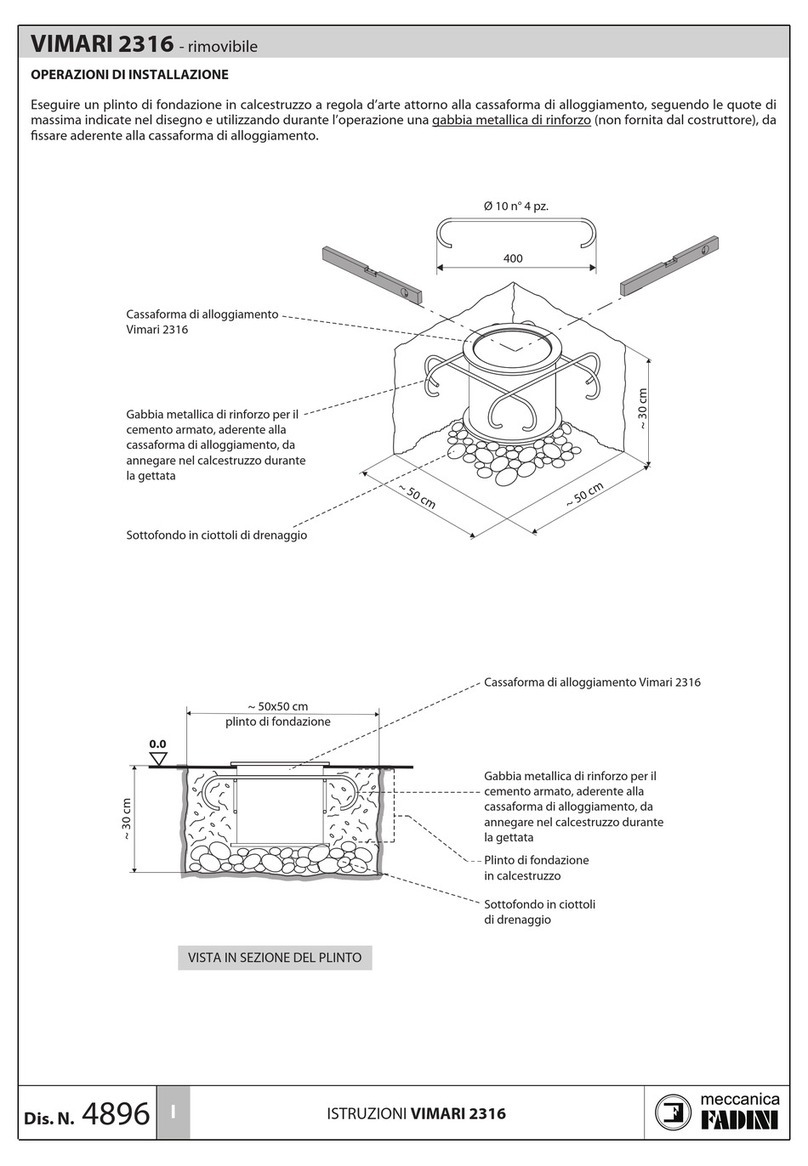BeaconMedaes Manfiold Troubleshooting guide

Operation and Maintenance Instructions
Manifold Control Systems
Manual Manold
Part number 2006230
Revision 03
May 24, 2019

Atlas Copco Ltd. trading as Atlas Copco Medical
Unit18NueldWay,Abingdon,Oxfordshire,UKOX141RL
Personnelmustmakethemselvesfamiliarwiththecontentsofthismanualandthe
functionoftheunitbeforeinstalling,operatingormaintaining.
Operation and Maintenance Manual
ManualManifold
Thisunitispurchasedfrom:
Datepurchased:
Modelnumber:
Serialnumber:
Option(s)included:
Anyinformation,serviceorsparepartsrequestsshouldincludetheserialnumberandbe
directedto:
BeaconMedæs
TelfordCrescent,Staveley
DerbyshireS433PF
Telephone:+44(0)1246474242
Email:[email protected]
WebsiteContacts:www.beaconmedaes.com
BeaconMedæsreservestherighttomakechangesandimprovementstoupdateproducts
soldpreviouslywithoutnoticeorobligation.
Abbreviations
Abbreviation FullDescription Abbreviation FullDescription
BS BritishStandard kPa Kilopascals
BSP BritishStandardPipe Max Maximum
CO2 Carbondioxide Med Medical
°C Degree Celsius m Meter
ø Diameter mm Millimetres
ERM Emergencyreservemanifold Min Minimum
EN European Standards N2 Nitrogen
1st First N2O Nitrousoxide
HTM HealthTechnicalMemorandum NRV Non-returnvalve
ID Identication OD OutsideDiameter
“Inch O2 Oxygen
ISO InternationalStandardOrganisation % Percentage
Kg Kilograms 2nd Second

3
Manual Manifold
2006230.03
Table of Contents
Section Figures Tables
0. Safety Precautions
1. General Information 1 - General Arrangement
2 - Schematic Diagram
1 - Main feature & components
2 - Manifold panel plus options part
numbers
3 - Relief valve set points
4 - Manifold header part numbers
2. Installation 3 & 4 - Typical Installation
5 - Optional Alarm Wiring
6 - Cylinder Header Layout Details
7 - Typical Tailpipe and Cylinder Connec-
tion
8 - Manual Manifold Controls
3. Commissioning
4. Principles of Operation 5 - Typical pressure settings
5. Maintenance Proce-
dures
9 - Relief Valve Inspection
10 - Cylinder Connection
6. Component Replace-
ment Procedures
11 - Line Non-return Valve Replacement
12 - Test Sampling Point Valve Replace-
ment
13 - 2nd Stage Regulator Replacement
14 - 1st Stage Regulator Replacement
15 - 2nd Stage Relief Valve Replacement
16 - 1st Stage Relief Valve Replacement
17 - Cylinder Header Non-return Valve
Replacement
18 - Line Pressure Gauge Replacement
19 - Cylinder Content Gauge Replacement
20 - Contact Gauge Wiring
6 - 2nd Stage Regulator Part Numbers
7 - 1st Stage Regulator Part Numbers
8 - 2nd Stage Relief Valve Part Numbers
9 - Header Non-return Valve Part
Numbers
10 - Line Pressure Gauge Part Numbers
11 - Cylinder Contact Gauge Part
Numbers
7. Recommended Spares 21 - Control Panel Item Details 12 - Spares Scheduling

4
Manual Manifold
2006230.03
0. Safety Precautions
This section gives safety, storage and handling
information for the BeaconMedæs Emergency
Reserve Manifold only. Component parts lists and
descriptions are available on request.
Operators should have carefully read and become
familiar with the contents of this manual before
maintaining the Emergency Reserve Manifold.
Operators are expected to use common sense safety
precautions, good workmanship practices and follow
any related local safety regulations.
0.1 Identication of symbols
The following symbols apply to this product and
are used in these instructions and on the product
in question. The meanings of these symbols are as
specied below: -
Read instructions
Ambient temperature range
Ambient humidity range
Ambient pressure range
Date of manufacture
Do not dispose of in general waste
0.2 Environmental Transport and
Storage Conditions
Ambient temperature: 0°C to 40°C
Relative humidity (non-condensing): 10%-95%
0.3 Environmental Operating
Conditions
Ambient temperature: 0°C to 40°C
Relative humidity (non-condensing): 10%-95%
Atmospheric pressure range - 70-110 kPa
0.4 Environmental Protection
Discard the unit and/or components in any standard
refuse facility. The unit does not contain and
hazardous substances.
0.5 Electromagnetic Interference
Not applicable
0.6 Cleaning
The manifold should be wiped over with a damp cloth
frequently to remove any dust or foreign substances
0.7 Safety Notice
Persons undertaking any installation and/or
maintenance must be fully trained in specialist work
of this nature.
Oil, grease and jointing compounds must not be used.
Do not attempt to prove the pressure relief valve,
under any circumstances, by altering the regulator.
Pressure relief valves must be removed and tested
o site by a registered test centre and a certicate of
conformity issued.
1. General Information
1.1 Introduction
The BeaconMedæs Manual Manifold is designed to
supply piped medical gas where continuity of supply
is desired, and where the gas is to be supplied from
high pressure gas cylinders. The manual manifold is
ideal for small installation with low ow demands.
The unit should be monitored from a close by location
for quick reaction times to manually changeover
the cylinder banks when empty. All individual
components conform to ISO and HTM requirements
to form a medical gas control panel to which
maximises safety requirements with a simplied
function.
See gure 1 and Table 1 for general arrangement,
gure 2 shows the schematic diagram.
The duty bank is determined by operating the cylinder
valves or optional high pressure bank valves is tted.
The duty bank will run down until the pressure
drops below alarm switch parameters. The supply
will then be manually changed over to the standby
bank. A signal can be taken to a remote alarm from
the contact gauge to alert the requirement to change
cylinders. This cycle is then repeated to maintain
continuous supply.
CAUTION - Change empty cylinders as soon
as possible
The control panel is available as standard to suit two
main distribution system pressures, 4 bar and 7 bar.
See table 1 for list of critical components included
and optional extras supplied as bolt on kits.

5
Manual Manifold
2006230.03
Figure 1 - Manual Manifold General Arrangement
Table 1: Main features/components
Item
No Description
Basic
Unit
Optional
Supply
1 1 stage regulator
2 Cylinder content/contact gauge
3 Line regulator
4 Line gauge
5 Integral Non-return Valve Assembly
6 1st Stage Pressure Relief Valve
7 Line Pressure Relief Valve
8 Lockable Isolation Valve
9 Test point Isolation Valve
10 Pipeline connection point (22mm
OD Copper Tube)
11 Pressure Relief Exhaust Connection
point (28mm OD Copper Tube)
12 Termination Box For Remote Alarm
13 Pressure Switch
14 High pressure bank valves
15 Single Line contact Module
(Not shown)
16 Double Line contact Module
(Not shown)
17 Manifold Headers C/W NRVs
18 Tailpipes
Notes...
Item 11 is recommended for indoor installations.
Item 15 & 16 are used to connect alarm outputs to a
Medipoint medical alarms.
1
2
3
4
5
6
8 (Valve shown in
Open Position)
7
9 (Valve shown in
Closed Position)
10
12
11
13
14
17
18
The manual manifold can be used as either main
supply or emergency reserve manifold (ERM). When
used as a emergency backup manifold the line
pressure regulator should be set slightly lower than
the primary supply pressure . This will prevent it
from feeding to the pipeline during normal operation
of the primary system. The line pressure regulator
can be increased to nominal distribution pressure in
the event of emergency.

6
Manual Manifold
2006230.03
Symbols to BS2971 & ISO 1219-1
Non-return valve
(With gas specific
connection)
TailpipeTailpipe
High pressure cylinders
compete with Isolation
valve
1st stage
regulator
1st stage
relief valve
2nd stage
regulator
Line pressure gauge
Non-return valve
2nd stage
relief valve
Lockable line ball
valve (Valve 'A')
Ball
valve 'C'
Test Point
Alternative supply
source
Medical gas pipeline
distribution system
Exhaust
(piped to safe location)
Lockable line ball
valve (Valve 'B')
Contact
gauge
Sintered
filter
Optional
Bank
Valve
Optional
Bank
Valve
Figure 2 - Schematic Diagram
1.2 Manifold Control Panel
The manifold control panel is supplied as nominally 4
bar (5 bar max.) and 7 bar (8.5 bar max), (see table 1
for details). The 4 bar manifold is available with 100 or
250 bar contents gauges depending on the pressure
of the cylinders to be used. Table 2 shows the supply
variations.
Option Description Part Number
Exhaust Pipe Connection Kit 2006233
Termination Box For Remote Alarm 2006219
4 Bar Pressure Switch with Line Contact Monitor 1829936
4 bar Pressure Switch without Line Contact
Monitor
2000131
7 Bar Pressure Switch with Line Contact Monitor 1829937
7 bar Pressure Switch without Line Contact
Monitor
2000132
Single Line contact Module 1826618
Double Line contact Module 1826499
1.3 1st Stage Pressure Regulator
For safe operation with regard to performance,
mechanical strength, resistance to ignition in pure
high pressure oxygen supply and cleanliness, the
unit fully conforms to BS EN ISO 10524-2. A pressure
relief valve connected to the regulator protects the
downstream pressure and is set at 2000 kPa (20 bar).
Table 2: Manifold Panel, typical cylinder supply
plus Options
Panel Description Gas Type Typical
Cylinder
Part
Number
4 bar standard unit (100
bar Contents Gauge)
N2O G - 44 bar 2006003
CO2 VF - 50 Bar
4 bar standard unit (250
bar Contents Gauge)
O2 J - 137 bar
2006004O2/N2O J - 137 bar
AIR J - 137 bar
7 bar standard unit (250
bar Contents Gauge)
AIR J - 137 bar 2006005
N2 J - 137 bar

7
Manual Manifold
2006230.03
1.4 2nd Stage Pressure Regulator
For safe operation with regard to performance,
mechanical strength and contamination the unit fully
conforms to BS EN ISO 10524-2, the second stage
pressure regulator is a manually set diaphragm type
and is used to set the system pressure to suit typical
nominal values for 4 & 7 bar pipeline systems.
1.5 Line Pressure Relief Valve
The line pressure relief valves are preset to the
values shown in table 3 for the dierent distribution
pressures.
Table 3: Relief Valve Set Points
Relief Valve Set Point Nominal Distribution
Pressure
530 kPa (5.3 bar) 400 kPa (4 bar)
900 kPa (9.0 bar) 700 kPa (7 bar)
The line pressure relief valve is installed between
the pressure regulator and the isolation valve (just
before the integrated non-return valve, see gure
1), thus protecting the delivery system from over
pressurisation by discharging to atmosphere in the
event of regulator failure.
Note - Use of optional exhaust connection (gure 1,
item 12) is recommended for indoor installations for
piping away to a safe location.
Table 4: Manifold Headers
1.6 Header Extension For
Cylinders connection
The control panel is compatible with standard
BeaconMedæs cylinder headers and tail pipes. See
table 4 for list of standard manifold assemblies.
Note tailpipes are supplied separate and may
vary depending on required national standards,
enquire for details.
Additional cylinder capacity can be added by using
the standard BeaconMedæs secondary header
extensions kits referenced in table 4.
1.7 Halogen Free Components
The control panel contains NO HALOGENATED
polymers located in the gas stream that may
experience pressurised oxygen in excess of 3000
kPa (30 Bar) in normal operation or single fault
condition, as recommended for safe practise of
the medical gas pipeline system.
Gas Type 2x1 2x2 2x3 2x4 2x5 2x6
Oxygen 8102371280 8102371281 8102371282 8102371283 8102371284 8102371285
Nitrous
Oxide 8102371286 8102371287 8102371288 8102371289 8102371290 8102371291
Entonox
O2/N2O 8102371292 8102371293 8102371294 8102371295 8102371296 8102371297
Medical Air 8102371298 8102371299 8102371300 8102371301 8102371302 8102371303
Nitrogen 8102371304 8102371305 8102371306 8102371307 8102371308 8102371309
Carbon
Dioxide 8102371310 8102371311 8102371312 8102371313 8102371314 8102371315
Customised arrangements
For a custom arrangement where independent
assemblies are required, accessories like the
loop connection, corner connection and free
standing conguration are available, more
information could be found on the latest
Manifold Header System installation manual.

8
Manual Manifold
2006230.03
2. Installation
2.1 Installation procedure for
Panel
CAUTION: Ensure no contaminates, oil
or grease come into contact with any of the gas
connection/internals.
2.1.1 Unpack and inspect all items for damage.
2.1.2 Check wall for suitability.
CAUTION: Supplied xings are for use with
solid masonry walls only. Alternative xing types
are not suppled with the unit. For securing to
alternative wall types, ensure that wall structure and
Figure 3 - Typical Installation For Use With ‘J’ & ‘G’
Type Cylinder
Note - ‘J’ type cylinders typically for Oxygen and Medical Air.
‘G’ type cylinders typically for Nitrous Oxide and N2O/O2 mix
(Entonox).
CAUTION: Supplied xings are for use with
solid masonry type walls only. Typical panel weight
is 15kg.
selected fasteners are suitable for supporting
the typical 15 kg weight of the panel.
2.1.3 Identify the centre position of the control
panel on the wall and mark.
2.1.4 Check gure 3 & 4 for typical mounting
heights and mounting hole details. Drill wall and t
wall plugs. Screw the panel to the wall, checking
that it is rmly attached.
2.1.5 Loosely connect the supplied ø22mm OD
stub pipe to the main pipeline isolation valve (Item
9, gure 1). Do not t the O’ring seal till after
brazing is complete to prevent damaging the seal.
Note - If option high pressure bank valves are used (see
gure 1, item 14) the manifold width increases by 110mm
per side.
Note - Image
shows
optional
exhaust and
terminal
box.

9
Manual Manifold
2006230.03
Note - ‘VF’ size cylinders are typically used for CO2.
Note - If option high pressure bank valves are used (see gure
1, item 14) the manifold width increases by 110mm per side.
CAUTION: Supplied xings are for use with
solid masonry type walls only. Typical panel weight
is 15kg.
Figure 4 - Typical Installation For use with ‘VF’ Type
Cylinders
2.1.6 Braze the pipework using the uxless brazing
technique with a nitrogen purge.
CAUTION: Ensure the brazed connection
point is isolated from any other pipeline source of
supply.
2.1.7 Undo the securing nuts on the pipeline
connection and insert the ‘O’ ring supplied into the
connection grooves and tighten.
2.1.8 The pipework should be secured to the
wall using munsen rings (not supplied). It is
recommended to install the rst pipe support to the
supplied ø22mm OD stub pipe (Item 10, gure 1).
The next support xture should typically be installed
within 2m of the rst.
2.1.9 The ø28mm exhaust line (Optional supply
- Item 11, gure 1) shall be brazed using uxless
brazing technique with nitrogen purge.
CAUTION: The ø28mm exhaust line (Item 11,
gure 1) needs to be piped away from the manifold
room to a safe location, to prevent buildup of waste
gas in an enclosed space in the event of a regulator
failure.
Note - Image
shows
optional
exhaust and
terminal
box.
CAUTION: Do not reduce the diameter of
the pipe used for the exhaust line. For long runs
the pipe diameter may need to be increased to
prevent back pressure.
2.2 Cylinder Content Alarm
Terminal Box (Optional Supply)
2.2.1 Use a at bladed screw driver to open the
terminal cover at the corners.
2.2.2 Wire the cylinder content alarm as shown
in gure 5.
Note - Line contact module must be used when
connecting to a Medipoint alarm panel.

10
Manual Manifold
2006230.03
Figure 6 - Typical cylinder header & extension
layout details (See table 4 for part number
references).
Note - If optional high pressure bank valves
are installed, add typically 110mm per side
for manifold assembly length
Figure 5 - Optional Cylinder Content Alarm Wiring
5
Cylinder content gauge
(Wired on site)
7 8
Cylinder content
alarm input
(Wired on site)
6
1 3 42
32
76
2.3 Installation procedure for
Modular Manifold Header - See
gure 6
CAUTION: Ensure that all the header rails
supplied are the correct gas type. The gas ID is
stamped onto the at section of the NRV caps.
Note - All header runs start with a primary header unit
with short stub pipe, secondary headers with longer
stub pipes are used for any additional units. See
gure 6 for typical examples.
2.3.1 Fit the cylinder header to the mounting
bracket with the M6 button head screws and washers
supplied in kit. Line up the rst header to the mani-
fold 5/8” connection point.
2.3.2 Ensure the bracket is level, mark the mounting
hole positions and drill. Fit the wall plugs and secure
the header bracket with the No. 10 pan heads sup-
plied with the kit.
CAUTION: Supplied xings are for use with
solid masonry type walls only. Typical cylinder
header Including bracket is 1.5kg per side.
2.3.3 For additional cylinder headers remove the 3/8”
BSP blanking plug and bonded seal from the end of
the primary header block and t 3/8” x 5/8” BSP tting
(supplied with kit) complete with O-ring seals for con-
nection of the next header.
2.3.4 Fit the next cylinder header to the mounting
bracket with the M6 button head screws and wash-
ers supplied in the kit. Oer the unit up to previous
bracket and secure using the M6 x 16 hex head set
screws and ange nut supplied with the extension
kit. Secure the header stub pipe to the previously
tted 5/8” connector.
2.3.5 Mark the wall mounting points (see gure
6), drill and secure in place. Repeat previous steps
until all headers have been tted.
2.3.6 When all header extensions are installed,
blank o the end of the most remote header
with the 3/8” BSP plug and bonded seal that was
removed in step 2.3.3.
3/8” x 5/8” header connector
complete with o’ring seals
Gas specic non-
return valves
3/8” Plug and
Bonded Seal
Cylinder
Header
Mounting
Bracket
Note - 3/8” plug and bonded seal is required
on the last cylinder header on each bank.
Wall mounting
points
Cylinder
securing
chain D-link
connection
point
Cylinder chain pin hook points

11
Manual Manifold
2006230.03
Note - For additional cylinders
beyond 6 continue to add
the above for either single or
double racks.

12
Manual Manifold
2006230.03
2.4 Cylinder Connection
CAUTION: Ensure that all tailpipes supplied
are the correct gas type. The gas ID is stamped onto
the nut that connects to the header non-return
valve (see gure 7).
2.4.1 Connect the tailpipes to the non-return valves
on the header racks as shown in gure 7.
2.4.2 Refer to hospitals/site policy for safe cylinder
handling (See section 4.5 for typical cylinder handling
safety check list), move the cylinders into place
(see gures 3 or 4 & 7) ready for connection to the
tailpipes.
CAUTION: Only persons who have
undertaken specic training in the safety of medical
gases, manual handling techniques and cylinder
changing procedures should be allowed to change
cylinders on medical gas manifolds or medical
equipment.
2.4.3 Install the cylinder chains to the header
brackets using the D-link where shown on gure 6.
Loop the chain around the cylinder to secure in place
and hook onto the pin on the header bracket.
2.4.4 Connect the cylinders to the pin indexed
clamp on the tail pipe, as shown in gure 7. Ensure
the bodok seal is in place at the opposite side to
the thumb screw on the pin index clamp before
connection.
Note - Pipe index tailpipes to BE EN ISO 21969 are
supplied as standard. Alternative connection types
are available on request.
2.4.5 See section 4.6 for cylinder operation
procedure
Figure 7 - Typical tailpipe and cylinder connection
Bodok Seal
Typical
tailpipe with
pin index
clamp
Header non-
return valve
3/8” to 5/8” adaptor or
3/8” blanking plug and
bonded seal to be tted
to most remote header
Tailpipe to non-
return valve
connection
(Gas ID stamped
here)

13
Manual Manifold
2006230.03
2.5 Installation check
2.5.1 Ensure that all tailpipes are connected to the
gas cylinders and manifolds on both sides and that the
restraining chains are secure around the cylinders.
2.5.2 Isolate the panel from the pipeline by closing
the line valve ‘A’ shown in gure 8.
2.5.3 Using one cylinder per side, slowly pressurise
the control panel (see section 4.6 - Cylinder operation).
The bank content gauge should indicate full cylinder
pressure. The distribution system pressure gauge
on the regulator (adjust as necessary, see section
3.3.2) should read typically as per table 5 (Section 4 -
Principle of Operation).
CAUTION: If the control panel is used as a
emergency reserve manifold (ERM) it is recommended
to set the line pressure at least 0.2 bar below the
main supply source pressure at full design ow to
ensure the emergency manifold does not supply the
pipeline during normal primary source operation.
2.5.4 Check for leaks. Now ensure all bank cylinders
are closed.
2.5.5 Slowly open the test point valve ‘C’, see gure
8. The duty bank of cylinders should drain to typically
14-25 bar depending on the contact gauge switch point
(see table 2). After which the contact gauge should
trigger. This will send a signal to notify that cylinders
are empty and require changing. If the control panel
is not currently connected to an alarm, this can be
checked with a multimeter across the contacts which
will change from a closed to an open circuit.
3. Commissioning
3.1 General
Commissioning of the control manifold must be
carried out in full after initial installation. The object
of the commissioning procedure is to ensure that
all components are serviceable and that the overall
system is operable and set to the correct distribution
pipeline pressure. Suitably qualied competent
personnel who are familiar with this manual must
only undertake commissioning of the panel.
3.2 Preparation
3.2.1 Ensure that all tailpipes are connected to the
cylinders and manifolds on both sides and that the
restraint chains are secure around the cylinders.
3.2.2 Ensure that the outlet pipeline connection
from the manifold panel is connected to the
distribution system of the same gas service, and
isolation valve ‘A’ (see gure 8) is present and closed.
3.2.3 Ensure that the panel’s isolation valve ‘C’
(shown in gure 8) is installed and in the closed
position.
3.2.4 Open all cylinder valves on the duty bank and
close all cylinders on the standby bank.
3.2.5 Check connections on the headers, tailpipes,
regulator and associated pipework for leaks.
3.3 Pressure Checks
3.3.1 Ensure that full gas cylinder pressure is shown
on the cylinder content gauges (see gure 8).
3.3.2 With Valve ‘A’ closed exhaust a small amount
of gas from the sampling outlet valve ‘C’. Check that
the pressure on the pipeline distribution pressure
gauge is typically as per table 5. Adjust as necessary.
Note - The line regulator is of the non-relieving type
as required for medical gas control. Any excess gas
pressure needs to be manually exhausted in order
to see the eects of reducing the regulator set point.
This is achieved by slightly opening the sampling
outlet isolation valve ‘C’ to produce a gentle bleed
from the panel.
3.3.3 Complete the steps in section 4.4 - Procedure
to prime the control panel, to bring the unit online.
Figure 8 - Manual Manifold Controls
Supply line
valve ‘A’
Test valve ‘C’
Cylinder
contents
gauge
Optional cylinder bank valves
Line regulator
2.5.6 The installation must now be purged as per
HTM 02-01 for UK installations, or as per relevant
standards if installed outside the UK.

14
Manual Manifold
2006230.03
4. Principles of Operation
4.1 General
The control panel line pressure is set in line with table
5 depending on normal operating range and whether
used as a primary supply or as an emergency reserve
system. When the primary supply is functioning
within it’s design limits, the backup panel will not
feed gas into the pipeline. If the primary supply fails,
causing the pipeline pressure to fall to the emergence
reserve manifolds (ERM) set point it will automatically
start feeding gas to the pipeline.
Table 5: Typical pressure settings for HTM02-
01 primary and emergency medical gas supply
system, during normal pipeline system operation.
Pressure (Bar)
Nominal System Design 4 7 11
Max. Static Pressure Primary Supply 4.6 8.2 11.5
Min. Dynamic Pressure Primary Supply 4.2 7.4 10.3
Max. Static Pressure ERM Supply 4.0 7.2 10.0
Min. Dynamic Pressure ERM Supply 3.5 6.5 9.0
Note - Table 5 shows typical examples. These gures
may dier depending on the hospital’s pipeline
management policy.
CAUTION: It is recommended to set the
emergency reserve manifold’s (ERM) line pressure at
least 0.2 bar below the main supply source pressure
at full design ow. This is to ensure the emergency
manifold does not supply gas into the pipeline
during normal primary source operation.
4.2 Operation as a primary supply
manifold
4.2.1 For use as a primary supply manifold open all
cylinder valves on the duty bank and close all on the
standby bank (See section 4.6 for cylinder operation)
4.2.2 When the duty bank of cylinders depletes to
the changeover pressure the contact switch on the
cylinder contents gauge will signal the requirement
to change cylinders if connected to a suitable alarm
system.
4.2.3 In response to the requirement to change
cylinders, open all cylinder valves on the standby bank
and close all cylinder valves on the empty bank. The
empty cylinders must then be replaced (See section
4.5 for cylinder handling, and section 4.6 for cylinder
operation).
4.2.4 These steps must be repeated for continuous
supply
4.3 Operation as a emergency
reserve manifold (ERM)
4.3.1 In the event of the primary system failing to
supply (Awareness of the Primary supply failure is
typically from a central alarm system) the ERM line
regulator (see gure 8) should be manually increased
to match the primary supply’s nominal values, so that
the full distribution pressure is restored.
4.3.2 For use as a ERM supply manifold all cylinder
valves on the duty bank should be open, and close
all on the standby bank (See section 4.6 for cylinder
operation)
4.3.3 When the duty bank of cylinders runs down to
the changeover pressure, the contact switching on the
cylinder contents gauge will signal the requirement
to change cylinders if connected to a suitable alarm
system.
4.3.4 In response to the requirement to change
empty cylinders, open all cylinder valves on the
standby bank and close all cylinder valves on the
empty bank. The empty cylinders can them be
replaced (See section 4.5 for cylinder handling, and
section 4.6 for cylinder operation).
4.3.5 These steps must be repeated for continuous
supply.
4.3.6 Once the primary supply of cylinders is
restored and running reset the emergency manifold
line pressure regulator as per the commissioning
steps in section 3.3.
CAUTION: The following procedures 4.4 to
4.6 are only typical guides, where there are conicts
with the hospital’s emergency procedure, the
hospital’s policy will take precedence.
4.4 Procedure to prime manifold
control panel.
4.4.1 The following procedure must be carried out
once the commissioning (section 3) is complete and
the system is ready to be put into use.
4.4.2 Open all cylinder valves on the duty bank and
close all on the standby bank. Correct as required,
see section 4.6 Cylinder Operation.
4.4.3 Ensure the connecting pipeline is ready for
use. Slowly open the line valve ‘A’ (see gure 8).

15
Manual Manifold
2006230.03
4.5 Typical Cylinder Handling
Checklist
CAUTION: Only persons who have had
specic training in the safety of medical gases,
manual handling techniques and cylinder changing
procedures should be allowed to change cylinders
on medical gas manifolds or medical equipment.
Safety shoes must be worn at all times. When
moving larger cylinders, wear heavy protective
gloves (preferably textile or leather). Keep all items
clean and grease/oil free.
Do not smoke or use naked lights.
When handling smaller cylinders, the use of
protective gloves may be inconvenient. Extra care
should be taken to avoid injury and to make sure
that hands are free from oil or grease before the
cylinders are handled.
Do not knock cylinders against each other or other
solid objects.
Do not drop or drag the cylinders.
Do not use cylinders as rollers or wheel chocks.
Do not lift any cylinder by its valve or cap
Use an appropriate trolley for larger cylinders.
4.6 Cylinder Operation
CAUTION: Undue force should not be
used to open or close cylinder valves, or to attach
connectors to cylinders.
CAUTION: ALL cylinder valves should be
opened gently. TAPPING the operating key GENTLY
with a soft-faced (copper) mallet is acceptable but
undue force should not be used. If it is obvious that
injury or damage could arise from trying to open
a sticking valve, the cylinder should be removed
from service and returned to the supplier as a faulty
cylinder.
CAUTION: Opening cylinder valves SLOWLY
will prevent a sudden rise in pressure in the system.
It is at this time when there will be most stress on
components and when most explosions will occur
due to adiabatic compression of any oil or grease
that may be present.
4.6.1 The cylinder valve should be FULLY opened
(slowly, anticlockwise) using the appropriate cylinder
key or handwheel where tted and then turned
clockwise a quarter turn.
CAUTION: If there is any leakage of gas
the cylinder should be removed from service and
returned as faulty. DO NOT attempt to tighten
gland nuts etc, as this may cause damage to the
valve.
4.6.2 To close the valve, turn the spindle or
handwheel clockwise. Hand pressure only should
be used to close the valve.
5. Maintenance Procedures
A competent person who is conversant with
the maintenance of high-pressure medical gas
installations and any special national conditions,
which may apply, must carry out all maintenance.
Preventative maintenance contracts are available
from BEACONMEDÆS for installations within the
U.K., overseas distributors will be able to supply
similar contracts in other areas.
WARNING: OBTAIN A WORK PERMIT
(OR EQUIVALENT FOR OVERSEAS) BEFORE
COMMENCING ANY WORK ON A MEDICAL GAS
INSTALLATION.
5.1 Daily Inspection
5.1.1 Check visual indicators for correct function
and damage.
5.1.2 If the control panel is observed to be
operating on its backup bank, replacements for
the empty cylinders must be made available
immediately.
5.1.3 Check manifold pressure gauges for
abnormal conditions.
5.1.4 Check control panel for unusual noises or
vibrations.
5.2 Weekly
5.2.1 Check that all cylinders are properly
secured and that batch labels are correct and in
date.
5.3 Quarterly
5.3.1 Ensure that:
(a) when the duty (primary) manifold is
running the reserve (secondary) manifold
cylinders are full;
(b) all system pressures are normal;
(c) all alarms are showing as normal;
(d) the manifold line isolating valve is open;
and

16
Manual Manifold
2006230.03
Bodok Seal
Typical
tailpipe with
pin index
clamp
Figure 10 - Cylinder Connection
Typical Cylinder
Valve
(e) the manifold is supplying the hospital.
5.3.2 If the control panel is used as an ERM, close
the isolating valve slowly and check that there is no
eect on the line pressure to the hospital. Open the
isolation valve when nished.
5.3.3 Check that the manifold safety valves are not
passing, by disconnecting their downstream exhaust
coupling (Optional supply) and inspecting for a gas
leak and check the condition of the seals (See gure
9). Replace the valve or seals as necessary (see
section 6 for component replacement). Reconnect
the exhaust pipework (optional supply), ensure the
O-ring seals correctly in place.
5.3.4 Close one cylinder valve and disconnect the
tailpipe at the cylinder end (see gure 10). Once the
tailpipe has drained listen for a leak. A minor leak
is permissible and likely but an obvious major leak
denotes failure of the manifold non-return valve
(NRV). If the latter happens, do not totally detach
the tailpipe but instead retighten it and test other
tailpipes in the same way. Any failed NRV’s can be
replaced (see section 6.7) after all cylinder valves have
been closed and the system has been depressurised.
Repeat this test when the new NRV’s have been tted
(See gure 10 and section 4.6 - Cylinder Operation).
Optional
exhaust line
2nd stage relief valve
1st Stage
relief valve
Note - All relief valve and optional exhaust connections are at
face unions complete with o-ring seals for ease of removal.
Figure 9 - Relief Valve Maintenance
(Image shown with optional exhaust)
5.3.5 Check the line pressure regulator set point.
WARNING: This check requires
momentarily isolating the manifold from the
pipeline. Ensure it is safe to carry out this test
before proceeding.
Ensure the line valve ‘A’ is closed. Open Valve ‘C’ to
produce a steady ow and check the pressure on
the line gauge does not drop by more than 10%. If
possible attach a owmeter to the test valve and
pipe away the exhaust gas to a safe location when
performing this test. Close valve ‘C’ and open valve
‘A’ when nished.
WARNING: For anaesthetic and oxygen
manifolds ensure that the manifold room
is well ventilated and no potential ignition
sources are present whilst performing this
test. Carry out this test for as short a time
as possible. Oxygen can be absorbed into
clothing etc., so once the test is complete it is
recommended to spend at least 20 minutes
out doors to ensure the oxygen has released.
During this time stay away from naked
ame, do not smoke etc. Do not perform this
test unless the risks can be kept within an
acceptable level.
5.3.6 Check the static pressure of the regulator
(this should be typically as per table 5 in section
4).
WARNING: This test requires
momentarily isolating the manifold from the
pipeline. Ensure it is safe to carry out this test
before proceeding.
Ensure that line valve ‘A’ is closed, observe the
pressure for typically 10-20 minutes to ensure
that there is no regulator creepage. Excessive
creepage will necessitate replacement of the
regulator (see section 6.3) and a repeat of this
test.

17
Manual Manifold
2006230.03
6.0 Component Replacement
Procedures
WARNING: IT IS ESSENTIAL THAT ONLY
GENUINE BEACONMEDÆS SPARE PARTS ARE FITTED
DURING MAINTENANCE.
CAUTION: Ensure no contaminates, oil
or grease come into contact with any of the gas
connection/internals.
6.1 Preparation For Component
Replacement
CAUTION: For primary manifolds ensure an
adequate backup supply is available and operating
correctly before taking the main supply o line for
maintenance.
5.3.7 To test the empty cylinder contact gauge close
the duty bank cylinder valves and observe the alarm
condition as the pressure drops.
IMPORTANT! Open the cylinder valves on
the original duty bank once the test is completed.
Note - If there is no demand on the supply you can
simulate this by opening the test valve ‘C’.
WARNING: If venting gas from valve ‘C’, for
anaesthetic and oxygen manifolds ensure that the
manifold room is well ventilated and no potential
ignition sources are present while running this
test.
WARNING: This check may eect the
continuity of gas supply, ensure it is safe to carry
out this test before proceeding.
5.3.8 Finally, tighten all joints, and inspect with
suitable leak detection uid.
5.3.9 Perform the steps in section 4.2 - Procedure
to prime the control manifold.
5.4 5 Years
Replace the pressure safety valve for a new certied
relief valve, see section 6. Replacement of the
regulators is also recommended at this time.
5.5 As Required
Replace tailpipes, pressure safety valve, pressure
regulator, high-pressure isolation valve, isolation
valves, contact gauges, non-return valve etc. as and
when required (see section 6.0).
CAUTION: For emergency backup
manifolds ensure the main supply is functioning
correctly before taking o line for maintenance.
6.1.1 Close the manifold line isolation valve
‘A’ (See gure 8). Close all the cylinder isolation
valves.
6.1.2 Open the sampling outlet valve ‘C’, to
depressurise the system.
CAUTION: When exhausting anaesthetic
and oxygen manifolds ensure that the manifold
room is well ventilated and no potential ignition
sources are present.
Note - If the cylinder contents gauges are not
rapidly falling in pressure, stop draining the system
and check all cylinders are correctly isolated.
6.2 Replace line non-return
valve (P/N: 2005951)
6.2.1 Complete steps in section 6.1 before
carrying out any component replacement on the
manifold control panel.
6.2.2 Slowly turn the swivel nut of the top 1”
connection. If you hear gas escaping do not fully
unscrew the joint until the system is fully drained.
6.2.3 Fully disconnect all three joints as shown in
gure 11 and gently remove the unit by sliding it
towards you. Take care not to damage the seals.
6.2.4 Inspect the existing seals and replace if
required, see gure 11 for seal part numbers.
6.2.5 Taking care not to damage the O-ring seals
replace the new non-return valve as shown in
gure 11, and fasten the 3 at face joints.
6.2.6 Disconnect the test point valve from the
original non-return manifold and t to the new
unit.
6.2.7 Follow steps in section 6.11 to bring the
manifold back online.

18
Manual Manifold
2006230.03
6.3 Replace Test Sampling Valve
(P/N: 2000172)
6.3.1 Complete steps in section 6.1 before carrying
out any component replacement on the manifold
control panel.
Figure 11 - Line Non-return Valve Replacement
Line non-return
valve manifold 3 x 1” at face
connection points
(O-ring P/N: 2000152)
Note - All non-return
valve connections
are at face unions
complete with o-ring
seals for ease of
removal.
1 x 1/2” at face
connection with swivel
(O-ring P/N: 1823637)
Test Point
6.3.2 Disconnect the valve at the 1/4” connection
(see gure 12). Check the bonded seal and
replace if necessary. Fit the new valve.
6.3.3 Follow steps in section 6.11 to bring the
manifold back online.
6.4 Replace 2nd stage regulator
(See table 6 for part numbers)
Table 6: 2nd Stage Regulator Part Numbers
Regulator Nominal
Pressure
Part Number
4 Bar 2005689
7 Bar 2005690
6.4.1 Complete steps in section 6.1 before
carrying out any component replacement on the
control panel.
6.4.2 Slowly turn the swivel nut of the top 1”
connection (see gure 13). If the you hear gas
escaping do not fully unscrew the joint until the
system is fully drained.
Figure 12 - Test Sampling Point Valve Replacement
Test Point
1 x 1/4” BSP connection
(Bonded Seal P/N:
2004808)
6.4.3 Fully disconnect the two 1” joints as shown
in gure 13 and gently remove the unit by sliding it
towards you. Take care not to damage the seals.
6.4.4 Remove the two 1/2” BSP x 1” at face
connectors and gauge, and t to the new regulator.
Figure 13 - 2nd Stage Regulator Replacement
2 o 1/2” BSP x 1” Flat
face connector
(O-ring P/N: 2000152)
(bonded seal P/N:
1825637)
2nd Stage
Regulator
Line Pressure Gauge.
(Copper Sealing washer
P/N: 2005896)

19
Manual Manifold
2006230.03
Figure 14 - 1st Stage Regulator Replacement
1st Stage
regulator
1” at face connection
with swivel nut and
O-ring seal (2000152)
5/8” at face
connection
with swivel nut
and O-ring seal
(1822236)
6.4.5 Inspect the existing seals and replace if
required, see gure 13 for seal part numbers.
6.4.6 Taking care not to damage the O-ring seals
replace the new regulator as shown in gure 13, and
fasten the 2 at face joints.
6.4.7 Follow steps in section 6.11 bring the control
panel back online.
6.5 1st stage regulator
replacement (See table 7 for part
numbers)
Table 7: 1st Stage regulator Part Numbers
Regulator Part Number
1st Stage Regulator 2005383
6.5.1 Complete steps in section 6.1 before carrying
out any component replacement on the control panel
6.5.2 Slowly turn the swivel nut of the 1”
connection. If you hear gas escaping do not fully
unscrew the joint until the system is fully drained.
6.5.3 Fully disconnect the 1” connection, the 5/8”
header connection and the bracket M6 ange nuts
as shown in gure 14, and gently remove the unit by
sliding it towards you. Take care not to damage the
seals.
6.5.4 Remove the gauge, minimum leak tting,
blanking plugs, relief valve and mounting bracket
form the old regulator and t to the new unit.
6.5.5 Inspect the existing seals and replace if
required, see gure 14 for seal part numbers.
Note - If the gauge orientation needs adjusting,
disconnection the gauge from the minimum leak
connection and ret using a new copper sealing
washer 2005896.
6.5.6 Taking care not to damage the O-ring seals
replace the new regulator as shown in gure 14, and
fasten the 1” and 5/8” at face connections.
6.5.7 Follow steps in section 6.11 to bring the
control panel back online.
M6 anged
nut
M5 Hex head
and washer
6.6 Replace 2nd stage relief
valve (See table 8 for part
numbers)
Table 8: 2nd Stage Relief Valve Part Numbers
Nominal Line
Pressure
Relief Set
Pressure
Part
Number
4 Bar 5.3 bar 2000122
7 Bar 11 bar 2000123
6.6.1 Complete steps in section 6.1 before
carrying out any component replacement on the
control panel.

20
Manual Manifold
2006230.03
6.6.2 Slowly turn the left hand 1” swivel nut
connection. If the you hear gas escaping do not fully
unscrew the joint until the system is fully drained.
6.6.3 Fully disconnect the 1” joints plus optional
exhaust connection if tted, as shown in gure 15,
and gently remove the unit by sliding it towards you.
Take care not to damage the seals.
6.6.4 Inspect the existing seals and replace if
required, see gure 15 for seal part numbers.
Remove the 1/8 blanking plug from the old relief valve
and t to the new unit.
6.6.5 Taking care not to damage the O-ring seals
replace the new relief valve as shown in gure 15, and
fasten the 2 at face joints.
6.6.6 Follow steps in section 6.11 to bring the
control panel back online.
6.7 Replace 1st stage relief valve
(P/N: 2005384)
6.7.1 Complete steps in section 6.1 before carrying
out any component replacement on the control panel.
6.7.2 If the optional exhaust assembly is installed
disconnect the 3/4” and 1” swivel nut connection.
Ensure there is adequate space for removing the valve
without spraining the pipe work (as shown in gure
16). Pipe line clamps may need to be unfastened to
achieve this.
Figure 15 - 2nd Stage Relief Valve Replacement
2 x 1” at face connections
(O-ring P/N: 2000152)
2nd Stage
Safety Relief
Valve
1/8”
blanking
plug and
seal
Figure 16 - 1st Stage Relief Valve Replacement
3/4” at face
connections
(O-ring seal P/N:
2000179
1st Stage Safety
Relief Valve
(Bonded seal P/N:
1824977)
1” at face connections (O-ring
P/N: 2000152)
Optional
exhaust
connection
Optional
exhaust
connection
6.7.3 Start to unscrew the 1st stage relief valve, if
you hear gas escaping do not fully remove until the
system is fully drained.
6.7.4 Inspect the existing seals and replace if
required, see gure 16 for seal part numbers.
6.7.5 Taking care not to damage the O-ring seals
replace the new relief valve as shown in gure 16,
and fasten the 2 optional exhaust pipe at face
joints if previously tted.
6.7.6 Follow steps in section 6.11 to bring the
control panel back online.
6.8 Replace Cylinder Header
Non-return Valves
(see table 9 for part numbers)
Table 9: Header Non-return Valve Part
Numbers
Gas Type Part Numbers
Oxygen (O2) 2000288
Nitrous Oxide (N2O) 2000289
Oxygen/Nitrous Oxide (O2/N2O) 2000290
Medical Air 2000291
Nitrogen (N2) 2000292
Carbon Dioxide (CO2) 2005850
Table of contents
Popular Control System manuals by other brands
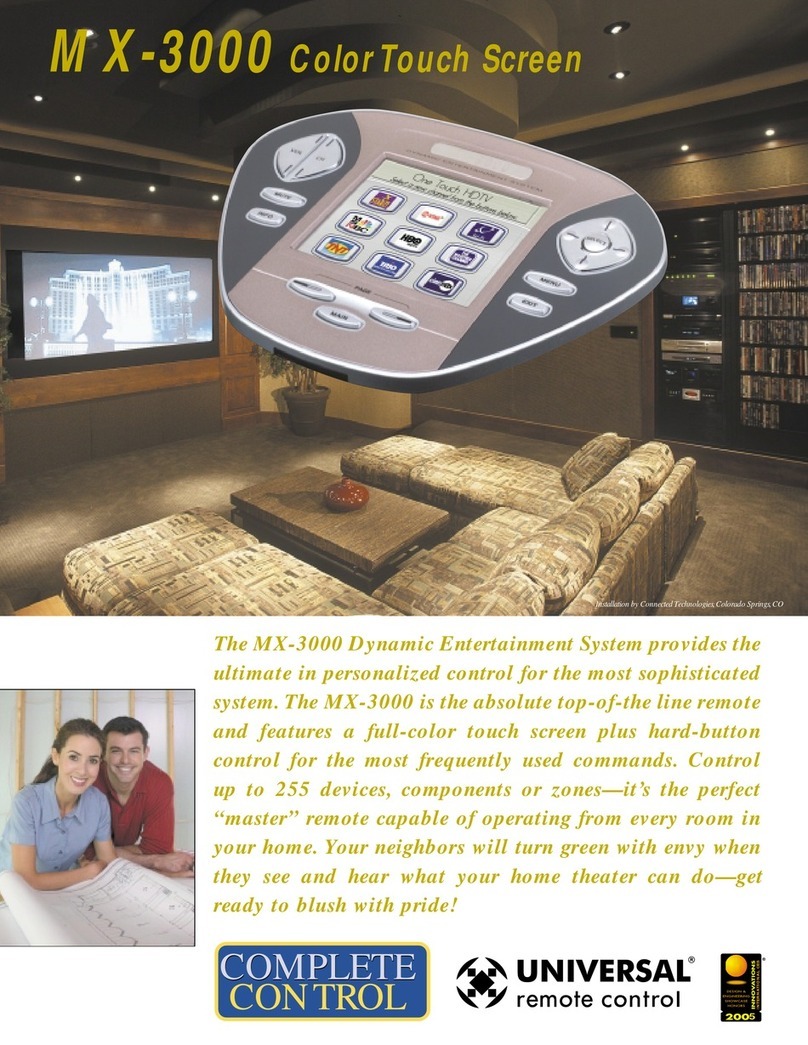
Universal Remote Control
Universal Remote Control MX-3000 brochure
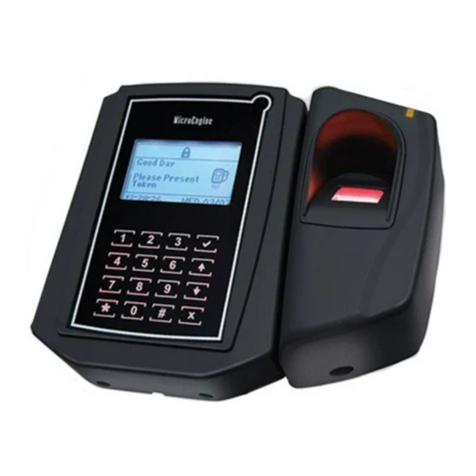
Microengine
Microengine XP-GT3500L quick start guide
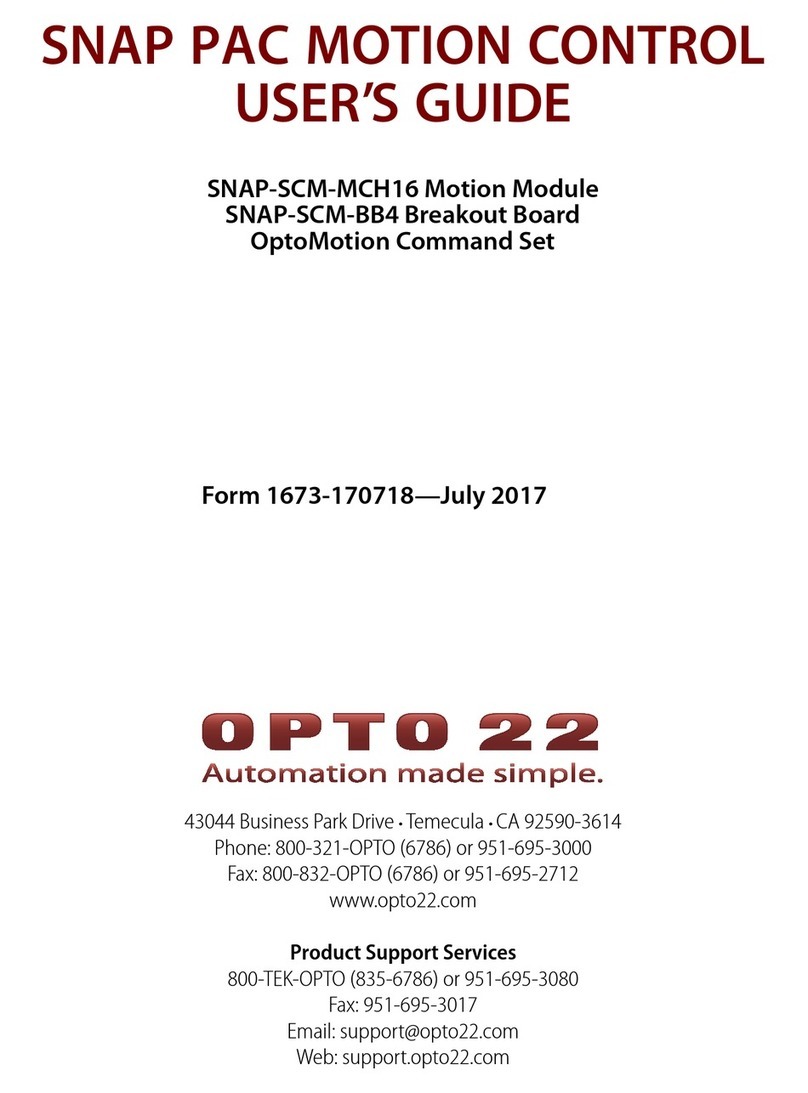
OPTO 22
OPTO 22 SNAP PAC MOTION CONTROL user guide
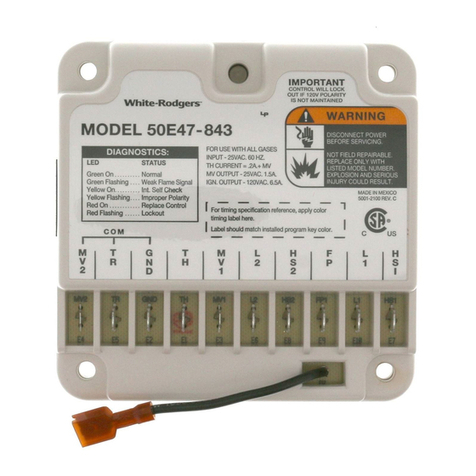
White Rodgers
White Rodgers 50E47-843 installation instructions
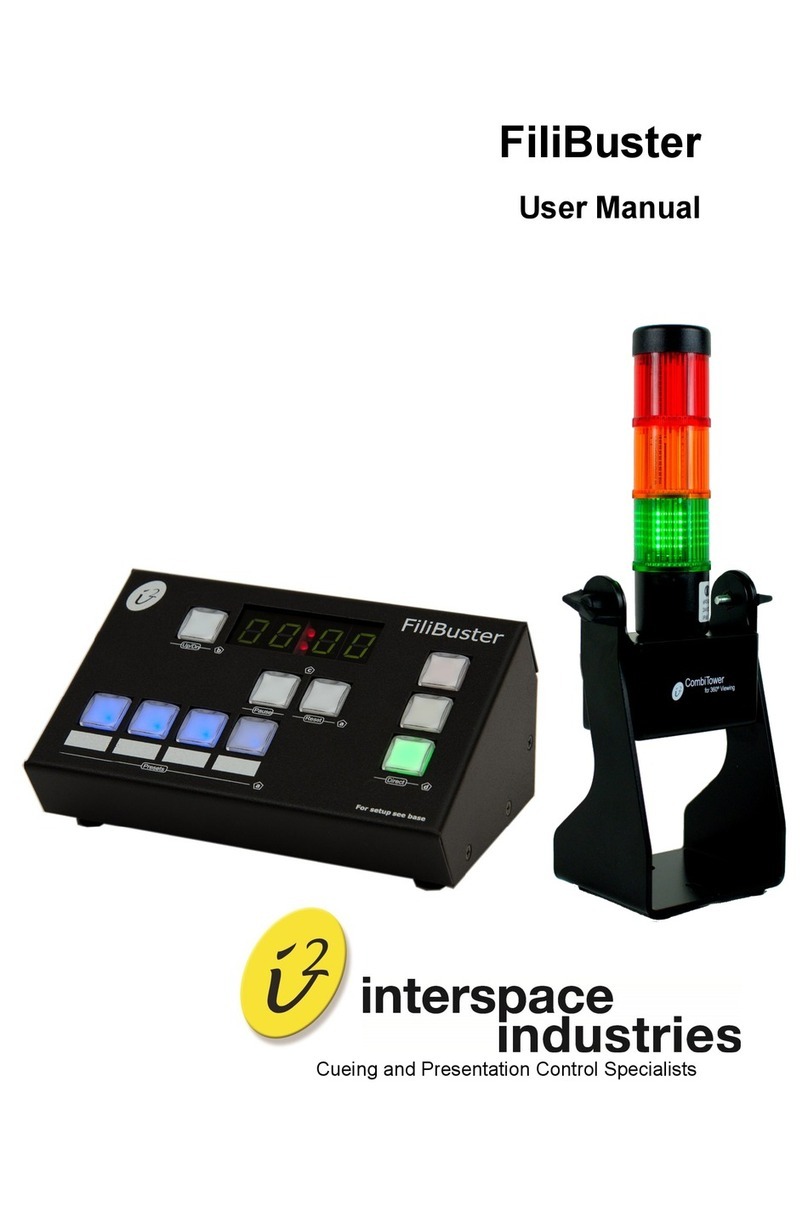
Interspace Industries
Interspace Industries FiliBuster user manual
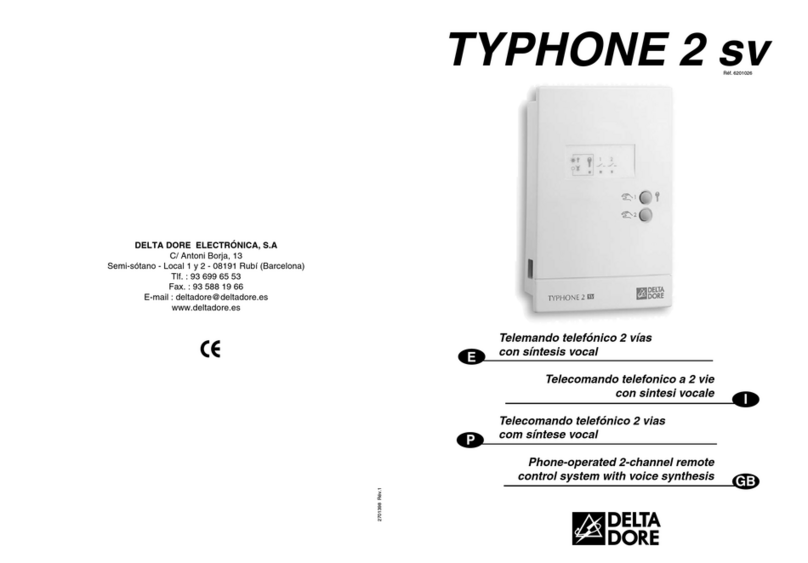
DELTA DORE
DELTA DORE TYPHONE 2 SV - GUIDE D manual
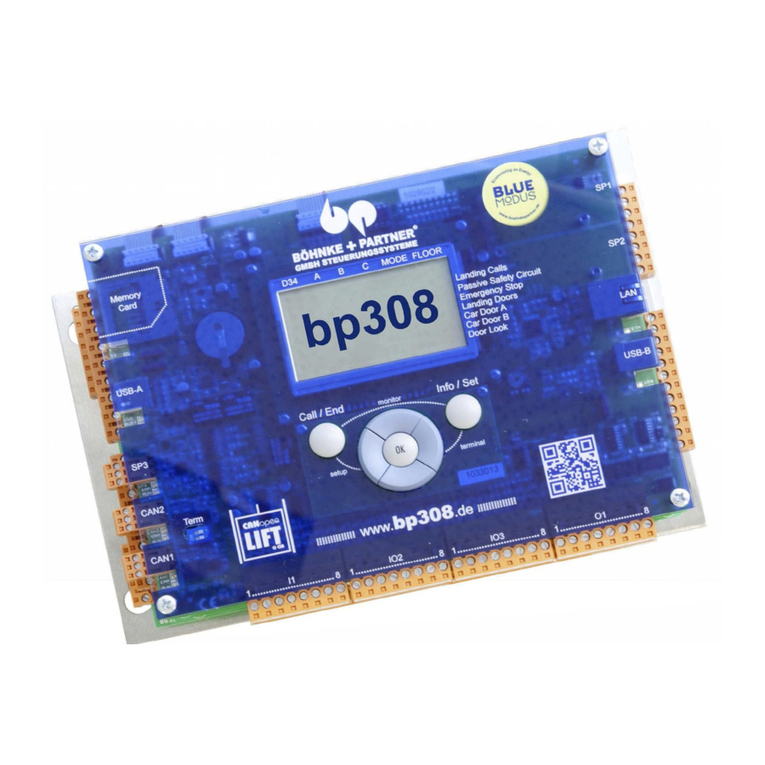
schmersal
schmersal bp308 installation manual
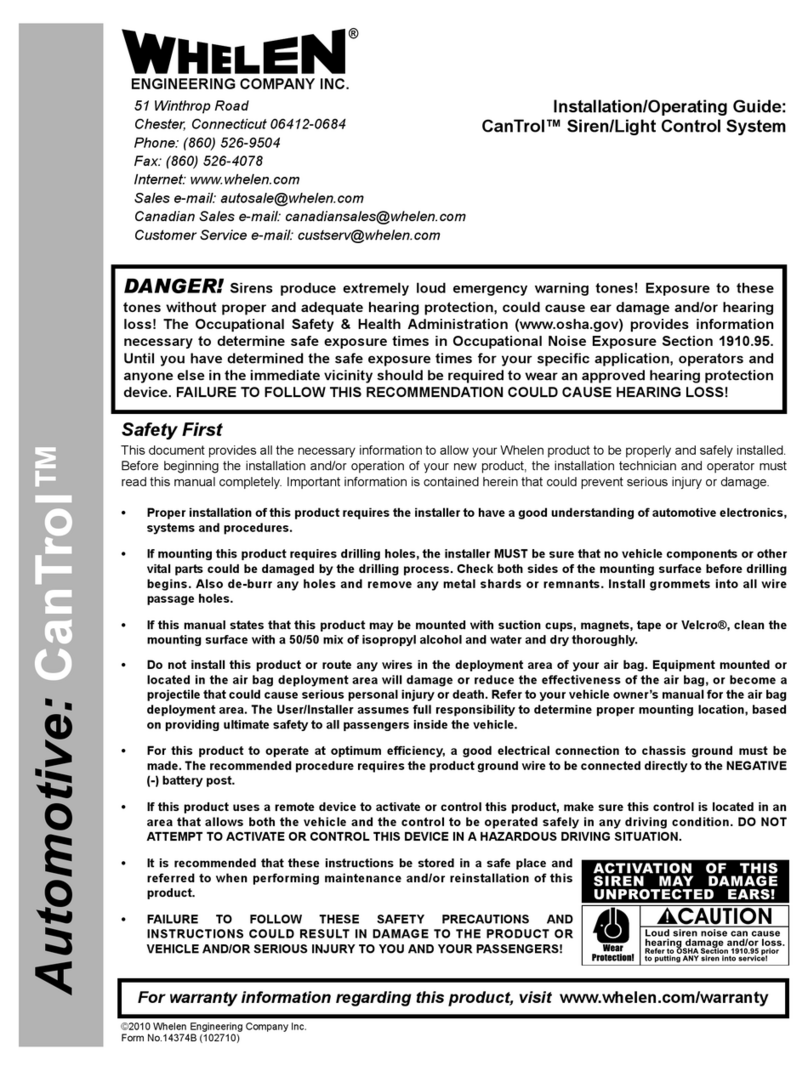
Whelen Engineering Company
Whelen Engineering Company CanTrol Installation & operating guide

NERI
NERI 2989.000.003 Instruction booklet
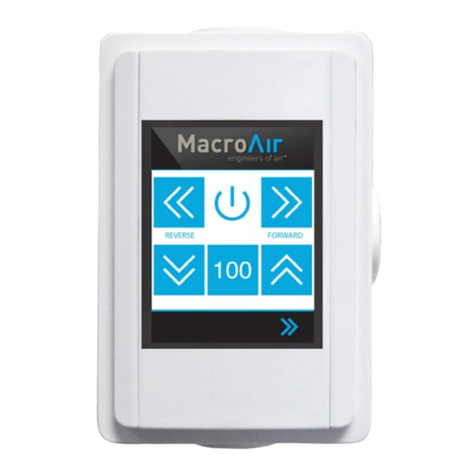
MacroAir Technologies
MacroAir Technologies Controller 4 Operation manual
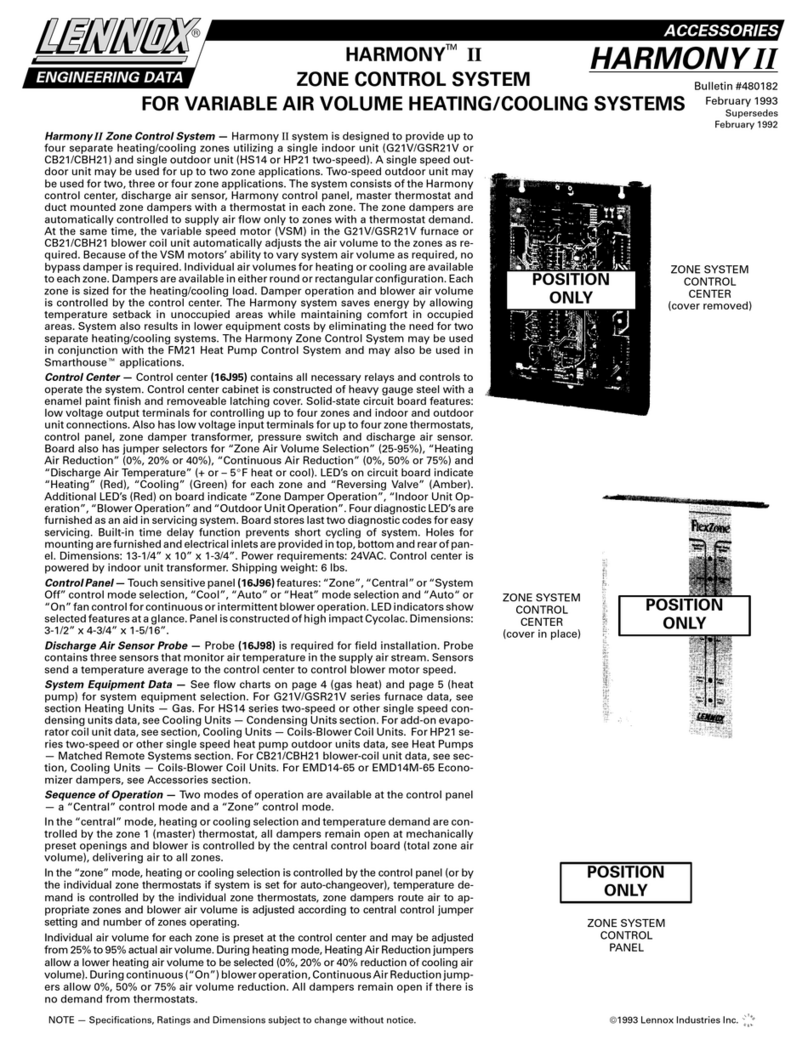
Lennox
Lennox HARMONY II manual

Vents
Vents th-Tune (A17) user manual
